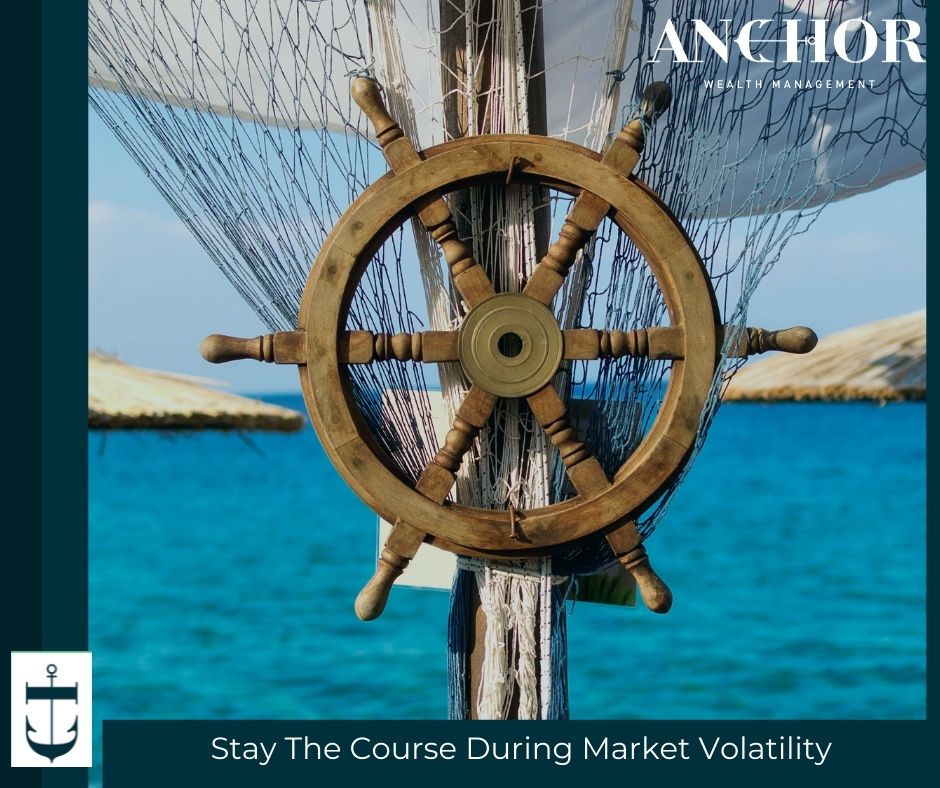
Miss Mary Mack Mack Mack.
All dressed in black black black.
With silver buttons buttons buttons
All down her back back back.
If you finished this rhyme in your head then you probably spent a lot of your childhood recesses like me, in the double Dutch line. These little rhymes served an important purpose in my youth. They helped me get the timing right to avoid taking a jump rope to the shin. In my adult life, I have come across individuals who use similar devices to try and predict market timing. Timing the market means getting in early on a large growth run and then getting out before the market falls. In theory, these actions can turn market movement into growth for an investor’s portfolio. The markets are similar to the jump rope of my youth in that they rise and fall. The important difference in this analogy is that, unlike a jump rope, those rises and falls are not easily predictable, so a simple rhyme won’t help you get the timing.
Anchor’s financial advisors encourage clients to stay the course. By that, we mean don’t let the market’s twists and turns dictate your path forward. One of the points of emphasis I have given to my clients recently is to focus on the time in the market instead of timing the market.
Trying to time the market is nearly impossible because nobody can call the bottom. We have seen the S&P down 21% and the anxiety that causes investors to want to get out, but then how do you decide when to get back in? When you are in a valley your view isn’t long-term, that is why it is important to have a trusted financial advisor helping you with your comprehensive financial plan. Managing emotions in these times is almost as important as managing a portfolio. Where the average investor may see cause to panic, financial advisors see opportunity. While you can’t predict the market, it’s good practice to understand the historic trends that it follows. The market usually corrects every 10 years and prior to this year, it had been 14 years since a correction. We have grown accustomed to 2% drops in a day and 2% growth the next. We are likely not looking at a V-shaped recovery. Normal recovery from a correction of this magnitude takes 18 months, so what should an investor do in this time of low markets? Stay The Course!
Investing during a recession has historically led to strong returns. Again, it’s more about time in the market vs. timing the market. This is about turning a challenge into an opportunity. While returns are low right now, it means that the price of stocks is also low! Disciplined investors recognize this as a great me to stay consistent in their investment strategy. When recovery does happen, it will happen quickly and with no notice. Let’s compare disciplined, consistent investing to an attempt to time the market. Since 1980, and including the 2021 downturn, the market has experienced four major crashes. If an investor had put $10,000 in the S&P in 1980 and stayed consistent across all of the ups and downs, that $10,000 investment would now be valued at $1.09 million! By comparison, if that same investor attempted to time the market and sold in time to avoid a downturn but didn’t correctly predict when to re-enter in order to take advantage of the recovery, it can have a significant impact on their returns. If that investor missed the best five days during the investment period, their $10,000 investment would be valued at $676,395. While this is a growth, it is 38% less than the investor who remained disciplined. Miss 10 of the best days and that investment is now worth $487,185, a 55% lower return.
This is a gut-check moment for investors. It’s easy to be happy with your investment strategy when the markets are up. If you are looking at your investments and not confident in what you are seeing, it may be time to talk with a financial planner who can help you create the consistency you need to get the outcomes you want for your money. Money is an emotional thing, that is why Anchor starts by defining money’s purpose in your life. When you understand why you invest, you can be more focused on the reason and less on the results.
Michelle Boisvert, AFIM, Sr. Wealth Advisor
